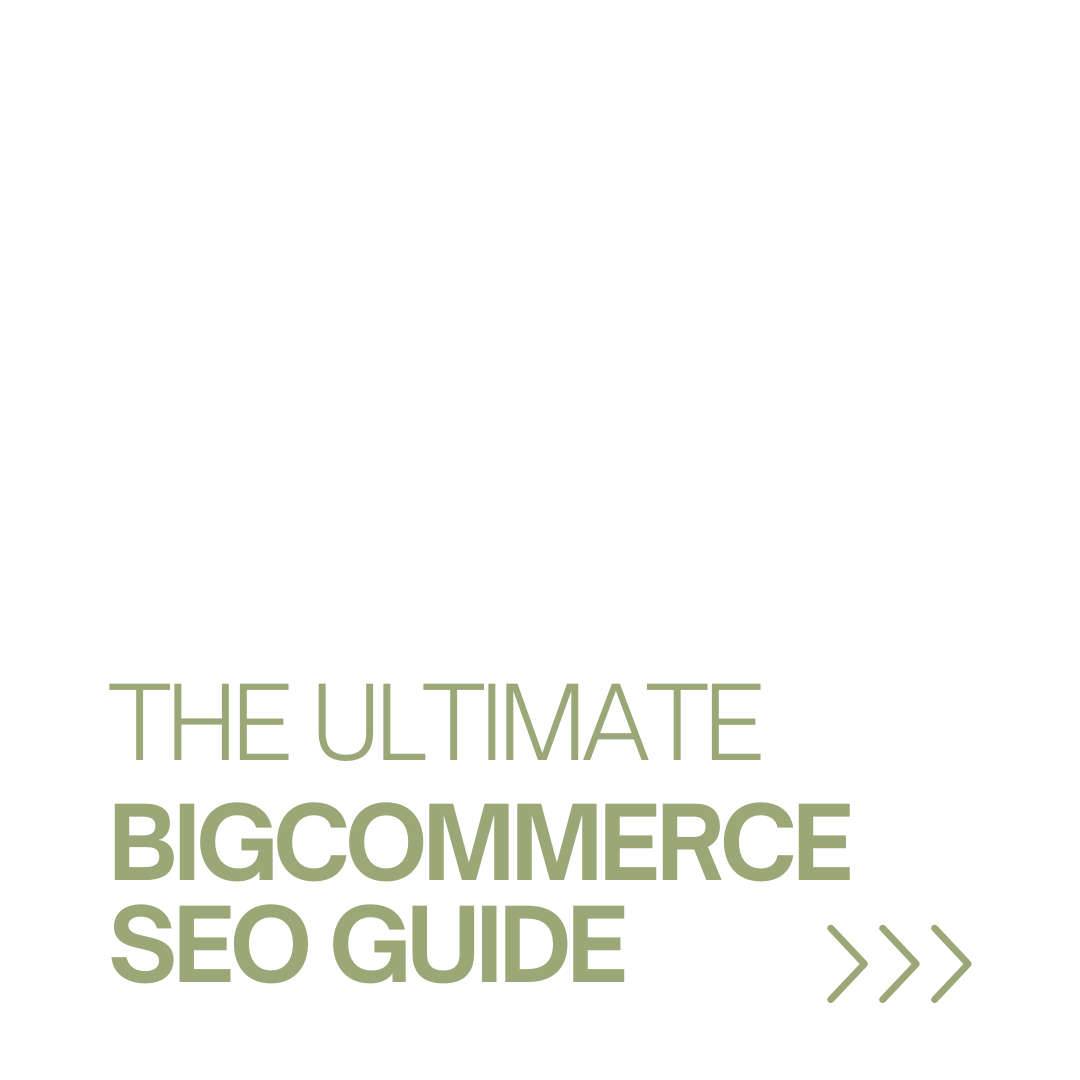Are you looking to raise your online store’s visibility and attract more customers? The answer lies in utilizing BigCommerce SEO services. Search Engine Optimization (SEO) is essential for online retailers because it helps your store appear higher in search engine results, driving organic traffic and increasing sales.
In this guide, we’ll share actionable tips and strategies to help you maximize the potential of your BigCommerce store through effective SEO practices. Whether you’re new to SEO or looking to refine your strategy, we’ve got you covered. Let’s begin.
The Basics of SEO for BigCommerce
Before discussing SEO strategies, let’s first define what SEO is.
Search Engine Optimization (SEO) is improving your website to rank higher on search engines like Google. When your site ranks higher, it becomes more visible to potential customers searching for products you sell. It’s the digital equivalent of placing your store on a busy street where it’s more likely to be seen by passersby.
How SEO drives organic traffic and boosts sales
Organic traffic refers to visitors who find your store through unpaid search results. Unlike paid ads, which require a continuous investment, organic traffic comes naturally over time as your SEO efforts take effect. When done correctly, SEO helps attract high-quality visitors actively looking for your products, making them more likely to purchase.
For example, if someone searches for “a dozen red roses” and your store appears on the first page of results, there’s a higher chance they’ll visit your site and buy from you. This targeted approach not only increases traffic but also gives you better sales.
Comparing SEO vs. paid advertising in terms of ROI
Both SEO and paid advertising have their benefits, but they work differently:
SEO: Optimizing your BigCommerce site requires an initial effort, but once your store ranks well, you can enjoy a steady stream of organic traffic without ongoing costs. It’s like planting a tree that grows and bears fruit every year.
Paid advertising: Delivers immediate results by placing your ads in front of potential customers. However, once you stop paying for ads, the traffic stops. It’s like renting a billboard: as long as you pay, it works but doesn’t provide long-term benefits.
In terms of Return on Investment (ROI), SEO often outperforms paid advertising. While paid ads can bring quick traffic, SEO builds a sustainable foundation that drives visitors and sales long after the initial work is done. Businesses often see a higher return for every dollar spent on SEO compared to the same investment in paid ads.
Learning these basics of BigCommerce SEO sets the stage for making informed decisions about how to optimize your store for long-term success. Up next, we’ll delve into keyword research and how it can further enhance your SEO strategy.
Keyword Research
You can’t do SEO without keyword research, which is the foundation of a successful SEO strategy. It involves identifying the words and phrases potential customers use when searching for products like yours.
When you target these keywords, you ensure that your store appears in relevant search results, attracting visitors who are more likely to convert into customers. It’s understanding the language your customers speak and using it to guide them to your store.
Doing effective keyword research
To find the right keywords, you need the right tools and techniques. Here are some essential tools to help you get started:
Google Keyword Planner: This free tool from Google helps you discover keywords related to your business. It provides data on search volume (how often people search for a keyword) and competition (how many other websites are targeting that keyword).
Ahrefs: A comprehensive SEO tool that offers in-depth keyword analysis, including keyword difficulty (how hard it is to rank for a keyword) and search volume. Ahrefs also allows you to see which keywords your competitors are ranking for, giving you valuable insights.
Amazon Keyword Tool: Since many people start their product searches on Amazon, this tool can help you find high-intent keywords. When you type a seed keyword, you get a list of related keywords that shoppers frequently use on Amazon.
Creating a keyword matrix for your product and category pages
Once you have a list of potential keywords, the next step is to organize them into a keyword matrix. This matrix helps you strategically place keywords across your product and category pages, ensuring that your entire site is optimized.
Here’s how to create one:
List your main categories: Start by listing the main categories of your products. For example, if you sell flowers, your categories might include “Romance,” “Sympathy,” and “Bestsellers.”
Identify primary keywords: For each category, identify a primary keyword. This should be the most relevant and highest-volume keyword for that category. For example, “anniversary flowers” could be a primary keyword for the “Romance” category.
Find secondary keywords: These are related keywords that support the primary keyword. They can be variations or long-tail keywords (more specific phrases). For example, under “anniversary flowers,” you might have secondary keywords like “dozen anniversary flowers” or “red flowers.”
Assign keywords to pages: Distribute your primary and secondary keywords across your product and category pages. Ensure each page targets a unique set of keywords to avoid keyword cannibalization (where multiple pages compete for the same keyword).
Track and refine: Use tools like Google Analytics and Ahrefs to monitor how well your keywords are performing. Refine your strategy based on the data, adjusting your keyword targets as needed to improve performance.
On-Page BigCommerce SEO Strategies
Now let’s move to on-page SEO. This type of SEO is making sure that when people visit your site, they find what they are looking for quickly and easily.
Here are some key areas to focus on:
URLs: Ensure your URLs are clean and descriptive. Instead of a generic URL like mystore.com/product12345, use something like mystore.com/dozen-red-roses. This helps both search engines and customers understand what the page is about.
Title tags: Your title tag is one of the most important on-page SEO elements. Include your primary keyword as close to the beginning as possible. For example, “Dozen Red Roses – Stunning Bouquet” is more effective than “Stunning Bouquet Dozen Red Roses.”
Body copy: Integrate your primary and secondary keywords naturally throughout your product descriptions and category pages. Aim for at least 300 words of unique content for each page, and ensure the copy is informative and engaging.
Image alt text: Since search engines can’t read images, they rely on alt text to understand them. Use descriptive alt text that includes your keywords, such as “dozen red roses bouquet.”
Metadata: Include keywords in your meta descriptions and tags. While meta descriptions don’t directly impact rankings, they can influence click-through rates (CTR), which can indirectly affect your SEO.
Crafting compelling meta descriptions
Meta descriptions are the snippets of text that appear below your page title in search results. They play a significant role in attracting clicks from searchers.
Here’s how to craft effective meta descriptions:
Be descriptive: Clearly describe what the page is about and include your primary keyword. For example, “Discover our range of men’s leather boots, perfect for any occasion. Shop now for stylish and comfortable footwear.”
Include a call to action: Encourage users to click with phrases like “Shop now,” “Discover more,” or “Learn more.”
Keep it concise: Aim for 150-160 characters. This ensures your entire description is visible in search results.
Writing high-quality, engaging content
Content is king when it comes to SEO. High-quality, engaging content keeps visitors on your site longer and encourages them to explore more pages, which can improve your search rankings. Here’s what to focus on:
Informative and helpful: Provide detailed information that answers your customers’ questions and helps them make informed decisions.
Unique content: Avoid duplicate content, as it can hurt your SEO. Ensure each product description and category page has unique content.
Regular updates: Keep your content fresh and updated to reflect new products, features, or industry trends.
Blogging for BigCommerce SEO
Blogging and content marketing are powerful tools to attract more visitors to your store and improve your SEO. Here’s how to use them effectively:
Start a blog: Write articles related to your products, industry trends, and customer interests. For example, if you sell flowers, you could blog about “Flower Trends for [Year]” or “How to Care for Cut Flowers.”
Use keywords: Integrate relevant keywords into your blog posts, but ensure they fit naturally into the content.
Share your expertise: Provide valuable insights and tips that position you as an authority in your industry. This not only attracts visitors but also builds trust with your audience.
Using rich snippets to enhance search results
Rich snippets are additional pieces of information that appear in search results, such as star ratings, prices, or reviews. They make your listings more attractive and can improve your CTR. Here’s how to use them properly:
Implement schema markup: Implement schema markup on your product pages to provide search engines with detailed information about your products. BigCommerce supports schema markup, making it easier to add rich snippets.
Highlight reviews: Display customer reviews and ratings prominently on your product pages. Positive reviews can enhance your credibility and encourage more clicks.
Provide clear information: Ensure your product details, such as prices and availability, are accurate and up-to-date. This information can be pulled into rich snippets and displayed in search results.
Next, we’ll explore the technical aspects of SEO that further enhance your store’s performance.
Technical BigCommerce SEO
Remember how on-page SEO is about making your visitors find their way through your site easily? Technical BigCommerce SEO is about improving your site for search engines so that your audience can find you.
These are some best practices to follow for an effective technical SEO strategy:
Site structure and navigation: Your BigCommerce site should be organized logically, with a clear hierarchy. Main categories should be easily accessible from the homepage, and subcategories should flow naturally from the main categories.
For example, a flower shop might have main categories like “Birthdays,” “Romance,” and “Just Because,” with subcategories such as “Tulips,” “Roses,” and “Lilies.”
Internal linking: Internal links help search engines understand the relationship between different pages on your site. They also guide visitors to related content, keeping them engaged longer.
Make sure to link from category pages to relevant product pages and vice versa. For instance, from a blog post about “Roses and their Meanings,” link to your product page for roses.
Clean URL structure: URLs should be descriptive and easy to read. Avoid complex strings of numbers and symbols. Instead, use URLs that clearly indicate the content of the page, such as mystore.com/mens-leather-boots.
Mobile optimization
Making your store friendly for search engines (and people!) means optimizing it to be viewed from all devices, especially phones. With more people shopping on their phones, mobile optimization is essential. Here’s what you can do:
Responsive design: BigCommerce SEO is about making sure your store looks and functions well on all devices, including smartphones and tablets. A responsive design automatically adjusts to different screen sizes, providing a seamless shopping experience.
Mobile speed and usability: Mobile users expect fast load times and easy navigation. Compress images, minimize the use of heavy scripts, and ensure buttons and links are easily clickable on smaller screens. Tools like Google’s Mobile-Friendly Test can help you evaluate your site’s mobile performance.
Page speed optimization
Page speed is another critical factor for both user experience and SEO. Slow-loading pages can frustrate visitors and lead to higher bounce rates (users leaving your site quickly). Here’s how to optimize your site’s speed:
Analyze speed with tools: Use Google PageSpeed Insights to analyze your site’s speed. This tool provides a score for both mobile and desktop versions of your site and offers suggestions for improvement.
Implement improvements: Common recommendations include compressing images, enabling browser caching, and reducing server response time. BigCommerce offers various apps and features to help you implement these changes easily.
Secure your site with SSL
Security is a top priority for online shoppers. An SSL certificate (Secure Socket Layer) encrypts data between your customers’ browsers and your website to keep their information safe. SSL is also a ranking factor for Google, making it essential for SEO.
When visitors see the padlock icon in their browser’s address bar, they know their data is secure. This builds trust and can lead to higher conversion rates. Additionally, Google favors secure sites in its search rankings.
Activating SSL on BigCommerce is straightforward:
- Log in to Your BigCommerce Account: Go to your dashboard.
- Navigate to Server Settings: Click on the ‘Server Settings’ tab.
- Select ‘SSL Certificate’ and follow the prompts to activate it. Most BigCommerce plans include a free SSL certificate.
Up next, we’ll explore off-page SEO strategies to further enhance your store’s visibility.
Off-Page SEO Strategies
Off-page SEO is, quite simply, those things you do off your website to increase your site’s rankings. It is mostly about backlinking.
Backlinks are like votes of confidence from other websites. When reputable sites link to your BigCommerce store, it signals to search engines that your content is valuable and trustworthy. This can significantly boost your search engine rankings. High-quality backlinks are a crucial component of a successful BigCommerce SEO strategy.
Strategies for building High-Quality Backlinks
Building high-quality backlinks requires effort and strategic planning. Here are some effective methods:
Guest posting: Writing articles for other websites in your industry can help you earn valuable backlinks. When you contribute high-quality content to reputable sites, you usually get to include a link back to your store. This not only drives traffic but also enhances your store’s credibility and SEO.
Influencer collaborations: Partnering with influencers in your niche can generate backlinks and increase your store’s visibility. Influencers often have dedicated followers and high domain authority. When they mention or link to your store, it can drive significant traffic and improve your search rankings.
Resource page link building: Many websites maintain resource pages that list useful links for their audience. Reach out to these sites and suggest including a link to your store. Ensure that your content or products are genuinely valuable to their readers, increasing the likelihood of getting featured.
Ahrefs to analyze competitors’ backlinks
Ahrefs is a powerful tool for backlink analysis and competitive research. Here’s how you can use it to gain insights and build your backlink strategy:
Identify competitors: Start by identifying your main competitors who rank well for your target keywords.
Analyze backlinks: Enter their URLs into Ahrefs’ Site Explorer to see where their backlinks are coming from.
Evaluate quality: Look for high-authority sites that link to your competitors. These are potential backlink opportunities for your store.
Reach out: Develop a strategy to reach out to these sites. Offer valuable content, products, or collaborations to earn backlinks.
Measuring and Improving SEO Performance
There is still stuff to do after you’ve planned your BigCommerce SEO strategy and implemented it. You simply can’t rest on your laurels because SEO is a continually evolving thing. You have to match every search engine algorithm update if you want your store to perform well.
Tracking and measuring your SEO performance is essential in understanding what’s working and what needs improvement.
Metrics to monitor
To effectively measure your SEO success, focus on the following key metrics:
Organic traffic: This is the number of visitors coming to your site from search engines. An increase in organic traffic indicates that your SEO efforts are paying off.
Search rankings: Monitor the positions of your targeted keywords in search engine results pages (SERPs). Higher rankings typically lead to more visibility and traffic.
Click-Through Rates (CTR): This metric shows the percentage of users who click on your site’s link after seeing it in search results. A high CTR suggests that your title tags and meta descriptions are compelling and relevant to users’ search queries.
Regular SEO audits to identify and fix issues
Regular SEO audits are essential for maintaining and improving your site’s performance. Here’s how to conduct an effective SEO audit:
Technical audit: Use tools like Google Search Console and Ahrefs to check for technical issues such as broken links, crawl errors, and duplicate content. Ensure your site is mobile-friendly and has a fast loading speed.
On-page audit: Review your pages to ensure they are optimized for your targeted keywords. Check that your URLs, title tags, meta descriptions, headers, and body content include relevant keywords and provide valuable information to users.
Content audit: Evaluate the quality and relevance of your content. Identify underperforming pages and update them with fresh, valuable information. Ensure your content is unique and free of plagiarism.
Backlink audit: Use Ahrefs to analyze your backlink profile. Identify any low-quality or spammy backlinks and disavow them if necessary. Focus on building high-quality backlinks from reputable sites.
User experience audit: Assess the usability and design of your site. Ensure it’s easy to navigate, visually appealing, and provides a seamless shopping experience. User-friendly sites tend to have lower bounce rates and higher conversion rates.
Regularly monitoring these metrics and conducting thorough SEO audits can help you continuously improve your BigCommerce store’s performance. This proactive approach helps you stay ahead of the competition and ensures your site remains optimized for search engines and users alike.
Summary
In this guide, we’ve covered essential strategies to enhance your BigCommerce SEO, including keyword research, on-page and technical SEO, and off-page tactics like building high-quality backlinks. In implementing these strategies, you can improve your store’s visibility, attract more organic traffic, and boost sales.
Investing time and effort into a robust BigCommerce SEO strategy pays off in the long run, offering sustainable growth and a competitive edge. Start optimizing today and watch your online store thrive!
Let BigCommerce SEO Experts Propel Your Sales
While mastering BigCommerce SEO can significantly boost your online presence, focusing on running your business is equally important. Why not let seasoned experts handle your SEO, content, and design needs? We at Epic specialize in BigCommerce, and we offer comprehensive digital marketing services, including SEO, blogging, graphic design, and web development.
Contact us today for a free consultation and see how we can help your store reach new heights. Let’s work together to turn your BigCommerce store into a success story!







